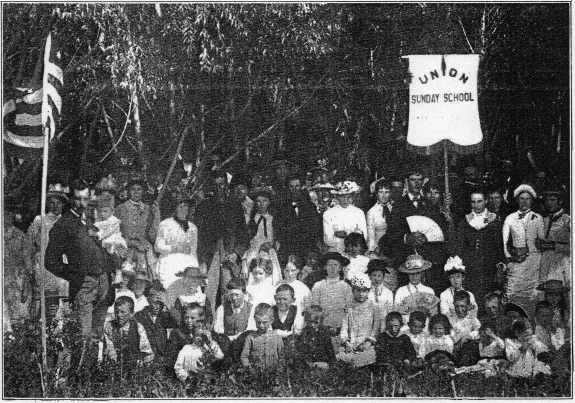| 308 | NEBRASKA HISTORY MAGAZINE |
him clothing for his family and when he wanted groceries, I asked him what he did to keep the "Wolf from the door." In answer he said that he was spending most of the time hunting prairie chickens, killing enough for his use and some neighbors. Then, I asked him how many chicken dogs he had. Two, he said. I asked what he fed his dogs. He replied that he fed them the things he had to eat, then I told him that I could issue no food for dogs, while there were so many hungry and starving children crying for bread, that for him to go back home, kill one of the dogs, then return next day and I would issue groceries for him and his family to eat. Raging like a bull and swearing, he left. Returning home, he and his wife thought it over and concluded that I was right, he killed one dog and came back next morning. When he told me what he had done, I issued the groceries.
Another man came and wanted things, I asked him if he had received an issue from any other place and he said, "Yes". I had been apprized (sic) of his rascality, so I had him put under oath and he acknowledged that he had five sacks of flour hid away. I gave him three hours to return home and bring to me four of the sacks, if not I would have him arrested. He was glad to get off that easy.
Bob Lucas, Troy Hale and Frady Reunion.
Last December, 1925, with Robert Lucas, formerly of Pierce County, Nebraska, I visited Troy Hale at San Diego, California forty‑two years after he had loaned me his big mare and little Jinny mule in the sand‑hills of Wheeler County, Nebraska, enabling me to return home. Troy Hale when a young man was "Wild and Woolly", but he had a heart in him as big as an ox and I am glad to say that he is now a true follower of the Lord.
Driving by the North Star.
In those early days of my missionary work I had to get from place to place as best I could. Many a time I have

Union Sunday School at West Union, Custer County. Photo 1886. Butcher Collection in Nebraska Historical Museum.
309
NEBRASKA HISTORY MAGAZINE |
309 |
driven all night without a road, forded rivers and crossed mountains keeping my direction by the north star. At. times I have traveled fifty miles from house to house.
Ferrying Across the Niobrara.
One Sunday morning before sun up, my daughter and I drove to a ferry across the Niobrara river. The ferryman was gone and I had four appointments to fill that day on the opposite side of the river and thirty miles to drive to meet them. There was only one thing to do and that was to learn to run the ferry boat, which was propelled by the current of the stream. I soon caught on to the manipulation and to be sure I would not make a mistake in ferrying, I took my team over first knowing if necessary I could swim them back to the wagon, and made a second trip for my rig. When all was accomplished it was nine o'clock, but we drove on and found the people gathered at the places of meeting. It was ten o'clock at night when I reached the last appointment but the people were there, and we had a blessed meeting; eleven of those present yielded themselves to the Lord.
Different Sunday schools and also some individuals in the East would send to the American Sunday School Union, Philadelphia, Pennsylvania, money to organize memorial schools. I was instructed to organize a few such schools. In such cases, I sought just the proper place to establish them.
A Memorial Sunday School in Big Horn.
A certain Presbyterian school in Philadelphia provided means to establish one on my field in memory of J. Howard Entwistle, an evangelistic singer who was a member of that school. I thought that I might find a favorable locality somewhere in the Big Horn Basin, Wyoming. While en route, my daughter and I camped near Cody. That night I was so deeply impressed that the place for the school was over a chain of mountains in the Sunlight Basin, we changed our course next morning and that afternoon reached the summit. We had to descend "Dead Indian Hill" two miles down and very steep. It was necessary to hitch
4
|
© 2004 for the NEGenWeb Project by Ted & Carole Miller |
||